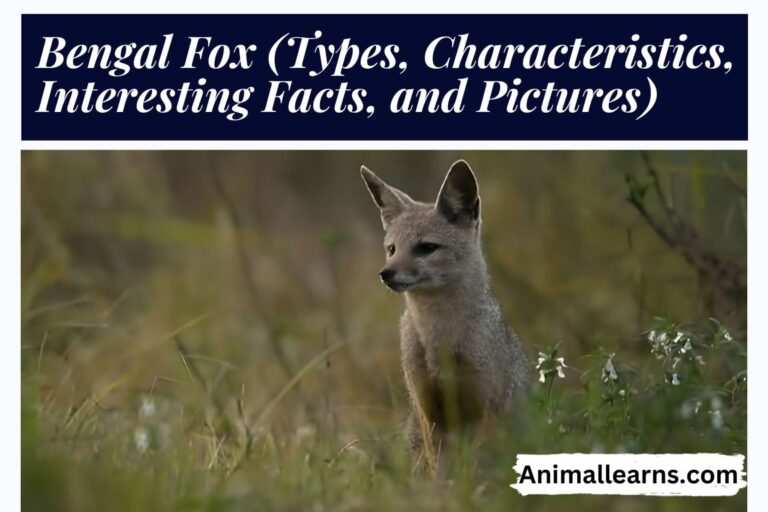The Amazing World of Baboons | Facts, Habitat – Animallearns

- Size: Baboons are medium to large primates.
- Weight: Adult baboons typically weigh between 30 to 82 pounds (14 to 37 kg).
- Height: They stand about 20 to 34 inches (50 to 86 cm) tall at the shoulder.
- Color: They have brownish-gray fur with a pronounced muzzle and a tail that varies in length.
- Origin: They are native to Africa and are found in various regions across the continent.
- Habitat: They inhabit a range of environments, from savannas and grasslands to forests and cliffs.
- Omnivores: They are opportunistic omnivores, meaning they eat both plant material and small animals.
These aren’t the smallest monkeys in the world. There are five different species of baboons found in Africa and Arabia: olive, yellow, chacma, guinea, and holy. Of the baboon family, the olive baboon is the one that is most widely dispersed.
Similar to other Old World monkeys, baboons are not able to use their tails as hands since they lack prehensile ability, yet they can still climb when needed.
They all have thick hair, strong jaws, sharp canine teeth, and noses like those of dogs. A ruff is the longer mane that surrounds the neck of males.
The Amazing World of Baboons
Contents
- 1 The Amazing World of Baboons
- 2 Distribution and Habitat
- 3 Habitat preferences
- 4 Reproduction and Life Cycles
- 5 Behavior and Lifestyle
- 6 Interesting Baboons Facts and Features
- 7 Baboon in Various Locations
- 8 Baboons and Other Wildlife
- 9 Baboons as pets
- 10 Baboon Adaptations
- 11 Types of babo-ons
- 12 Conclusion
- 13 FAQs
Babbons are amazing primates that can live in many different places, from deserts to forests, and from Africa to Asia. They have colorful faces, strong jaws, and clever minds.
They belong to a group of primates called Old World monkeys, which means they are related to macaques, mandrills, and langurs. There are five species of babo-ons: olive, yellow, chacma, Guinea, and hamadryas.
They all look similar, but they have some differences in size, color, and hairstyle. They can be found in 25 countries across Africa and Arabia, where they have learned to adapt to various environments and climates.
They are very social animals. They live in groups called troops, which can have up to 200 members. Each troop has a leader, who is usually the biggest and strongest male.
They are omnivorous, which means they eat both plants and animals. They can eat fruits, seeds, roots, leaves, flowers, insects, eggs, rodents, birds, and even small antelopes.
Distribution and Habitat
Geographic Distribution
They are awesome monkeys that can live in many different places. They are mostly found in Africa, but some of them also live in Arabia. Let’s take a look at where these amazing animals live and what makes them special.
Africa: Africa is the main home of babo-ons. They live in many parts of this big continent, and each kind has its own favorite place. For example, some babo-ons live in East Africa, where they can enjoy the beautiful scenery of Kenya and Tanzania.
Some live in South Africa, where they can climb mountains and swim in the sea. Some live in West Africa, where they can find lots of tasty fruits and nuts. And some baboons live in other places in Africa, where they have learned to adapt to different habitats.
Arabia: Some babo-ons also live in Arabia, which is a peninsula that sticks out from Asia. These are called hamadryas babo-ons, and they are very good at living in dry places.
They can find water and food in the deserts of Yemen and Saudi Arabia. They also have a special way of living together, where each male has his own group of females and kids.

They are amazing monkeys that have a lot in common but also have some differences. They all have big noses, strong teeth, and thick fur. They all live in groups, talk to each other, and groom each other.
They all play an important role in their ecosystems, helping to spread seeds and control pests. But they also have different sizes, colors, and hairstyles. They also have different preferences for where they live and what they eat.
They are fascinating animals that show us how diverse and adaptable nature can be. They have been living on this planet for a long time, and they have a lot to teach us about survival and cooperation. We hope you enjoyed learning more about these wonderful monkeys and their amazing lives.
Habitat preferences
They have learned to use their bodies and brains to survive in different environments. Whether they live in dry or wet places, they have some special tricks that help them stay alive and happy. Let’s see how babo-ons adapt to their habitats and how their habitats affect their behavior.
In dry places, like the savannas of Africa, water is very important for babo-ons. They have special kidneys that help them save water in their bodies. This way, they don’t need to drink as much as other animals. They also know where to find water sources, like rivers, lakes, or even plants. They can dig up roots or chew on stems to get some moisture.
In wet places, like the forests, they have other advantages. They have strong arms and legs that help them climb trees. This way, they can reach fruits and leaves that grow high up. They can also escape from predators, like leopards or snakes, by jumping from branch to branch.
They also behave differently depending on their habitats. In places where there is plenty of food and water, they are more relaxed and friendly. They live in big groups, called troops, and they share and care for each other. They groom each other, play together, and help each other when in trouble.
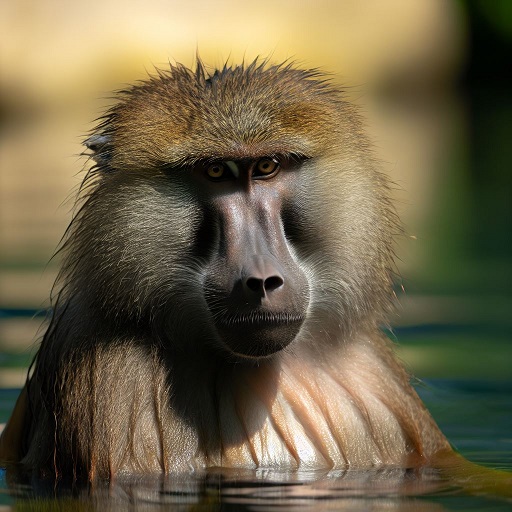
In places where there is not enough food and water, they are more stressed and aggressive. They live in smaller groups, and they fight for resources.
They defend their territories from other babo-ons or animals. They are more alert and cautious, and they don’t trust strangers.
As you can see, They are very adaptable animals that can live in different habitats. Their habitats shape their lives and their behavior.
They have evolved to cope with the challenges and opportunities of their environment. They are fascinating animals that show us how nature can be diverse and amazing.
Reproduction and Life Cycles
They live in large groups called troops, where they form strong bonds and cooperate with each other. Here are some of the fascinating stages of their life cycle:
- Mating: They have a complex mating system that depends on their social rank and relationships. They use different signals and gestures to show their interest and availability to potential mates. Some babo-ons mate with only one partner, while others have multiple partners. Mating can happen at any time of the year, but it is more common during the rainy season when food is abundant.
- Pregnancy: After mating, female babo-ons carry their babies for about six months in their wombs. During this time, they may receive extra care and attention from other females in the troop, who help them find food and protect them from predators. Pregnancy is a special time for female babo-ons, as they prepare to welcome their new offspring.
- Birth: When the time comes, female babo-ons give birth in the presence of other females, who act as midwives and helpers. They may lick the newborn, cut the umbilical cord, and even hold the baby for the mother. The mother usually bonds with her baby immediately, holding it close to her chest and nursing it frequently. The baby’s father may also visit and groom the mother and the baby.
- Infancy: For the first few months of their lives, baboon infants depend entirely on their mothers for nourishment and protection. They cling to their mother’s fur as they travel with the troop, learning about their environment and socializing with other babo-ons. Infants are very curious and playful, but they also face many dangers from predators and rival troops. Their mothers are always alert and ready to defend them if needed.
- Juvenile: As baboon infants grow older, they become more independent and adventurous. They start to explore their surroundings more, play with other juveniles, and learn how to find food and avoid danger. They also learn the rules and norms of their troop, such as who is dominant and who is subordinate, who is friend and who is foe, and how to communicate and cooperate with others. Juveniles are still close to their mothers, but they also form friendships with other babo-ons of their age and sex.
- Adulthood: When they reach sexual maturity, they enter the adult stage of their life cycle. They become more involved in the reproductive activities of the troop, competing for mates and producing offspring. They also contribute to the defense and cohesion of the troops, participating in fights and alliances with other babo-ons. Their roles and status within the troop depend on many factors, such as their sex, age, personality, kinship, and history.
- Old age: As babo-ons age, they may lose some of their physical strength and dominant rank, but they do not lose their importance or respect in the troop. Older babo-ons have a wealth of knowledge and experience that they can share with younger generations. They may act as mentors, teachers, or leaders for other baboon, helping them navigate the challenges and opportunities of life.
They have a remarkable life cycle that reflects their intelligence and adaptability. They are able to survive and thrive in diverse habitats and conditions, thanks to their social skills and cooperation. They are truly fascinating creatures that deserve our admiration and protection.
Behavior and Lifestyle
They are fascinating animals that have a lot of social skills and smarts. They live in groups called troops, where they have a clear order of who is the boss and who is not. This order helps them share food, find mates, and groom each other.
They spend a lot of time looking for food, and they eat almost anything they can find, from fruits and plants to bugs and small animals. They also have many ways of talking to each other, using sounds, gestures, and facial expressions.
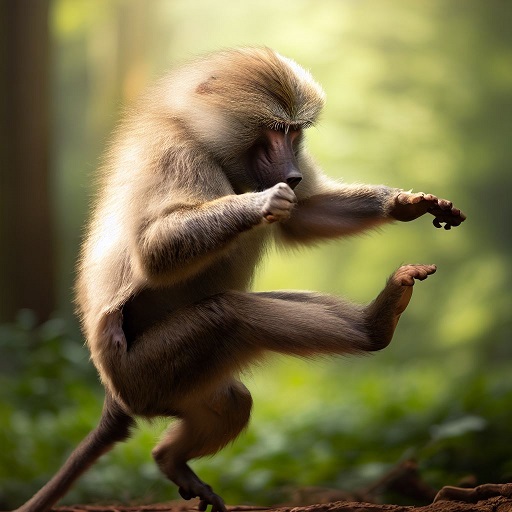
They can tell each other if there is danger, where to find food, or how they feel. One of the most fun things that baboon do is play. Playing helps them learn new things and make friends with other babo-ons.
Grooming is another important activity that baboon do every day. Grooming means cleaning each other’s fur and picking out dirt or bugs. Grooming makes babo-ons feel good and also shows that they care for each other.
They are amazing creatures that can adapt to different environments and situations. They have a rich and complex social life that makes them very interesting to watch and learn from.
Interesting Baboons Facts and Features

They are not only colorful and clever, but also social and altruistic. Here are some of the reasons why they are so intriguing:
- Their bums are a sight to behold. Some male babo-ons have bright red or blue bums that they use to attract females and show off their status in their groups. The more colorful their bums, the more dominant they are.
- They have complex social lives. They live in large groups called troops, where they form intricate hierarchies based on rank and kinship. These hierarchies affect their access to food and mates, and their social interactions with other babo-ons.
- They can live in diverse habitats. They are very adaptable and can survive in different environments, from the African savannas to the cliffs of Saudi Arabia. They can find food in various ecosystems, as they are omnivorous and eat both plants and animals.
- They are clever problem solvers. They are surprisingly smart and can use tools, such as sticks or rocks, to help them find food or defend themselves. They can also adapt to new situations and learn from their experiences.
- They communicate in many ways. They have a rich system of communication that includes vocalizations, facial expressions, and body language. They use these forms of communication to convey different messages to their troops, such as warnings, submissions, or greetings.
- They care for each other. They are known for their altruistic behavior. They often groom each other, which not only strengthens their social bonds but also helps remove parasites and keep their troops healthy.
- They can fend off predators. They are not easy prey for predators, such as lions or leopards. They have loud vocalizations and group defense strategies that make them formidable opponents. They can even chase away or kill predators that threaten their group.
- They live long lives. They can live for 20 to 30 years in the wild, and even longer in captivity. This gives researchers a chance to study their social behavior and interactions over a long period of time.
- They are affected by human impact. Unfortunately, baboons often face conflicts with humans over resources, which can lead to negative outcomes. However, in some regions, they have become a symbol of wildlife conservation efforts, highlighting the importance of protecting their natural habitats.
These captivating facts and features of babo-ons show how complex and interesting they are as a species and how they contribute to the diversity of the animal kingdom. Studying these primates can offer valuable insights into the natural world and the intricacies of animal behavior.
Baboon in Various Locations
They have learned to survive in harsh deserts, green grasslands, busy cities, and more. You can see baboon in Kenya, where they share their space with humans and other wildlife. You can also find them in Cape Town, South Africa, where they have a special relationship with the city dwellers.
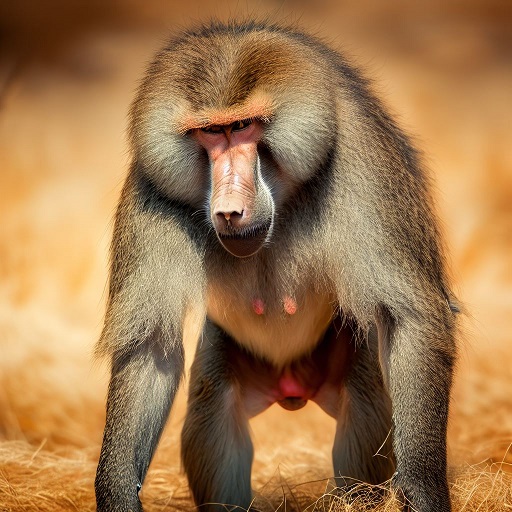
In Tanzania, you can admire them among the stunning scenery of the national parks. They also live in India, where they add to the beauty and diversity of the tropical forests. In Ethiopia, you can watch These creatures climb the high mountains with ease.
In Ghana and Uganda, you can observe them in the forests, where they show how well they can adapt to different African habitats. Baboons are fascinating to study because they help us learn more about their role in nature and their evolution.
Baboons and Other Wildlife
Interactions with other animals
Sometimes they meet domestic dogs, but they don’t always get along. Babo-ons may see them as enemies or snacks, depending on the situation. They also share their homes with other primates, such as mandrills and monkeys.
They have to compete for food and space, and they have complex social rules. Wolves and lions are big and scary, and they can eat baboon if they are not careful. They have to watch out for them and stay safe.
Baboons in the ecosystem
They are important for the ecosystem. They are part of the food chain, eating and being eaten by other animals. They also help plants grow by spreading seeds and eating insects. But sometimes they can cause problems, too.
They may eat crops or mess up the balance of other animals. They are amazing animals that show us how nature works and how they fit in the big picture.
Baboons as pets
They are amazing creatures that belong in the wild, not in our homes. They have their own families, friends, and cultures that we can’t understand or provide for them. They may look adorable when they are babies, but they grow up fast and become very strong and smart.
They can easily hurt us or themselves if they get bored, scared, or angry. They also need a lot of space, food, and care that we can’t give them.

By keeping baboons as pets, we are harming them and their natural environment. We are also supporting the illegal wildlife trade that threatens many endangered species. That’s why many countries have laws that forbid or limit the keeping of baboon as pets.
We should respect these animals and let them live freely in their own habitats. Instead of trying to make them our pets, we should help them by protecting their homes and supporting their conservation.
Baboon Adaptations
They have some incredible features that help them survive and thrive in their environments. Let’s take a look at some of them:
- They are not picky eaters. Baboon-s are omnivorous, which means they eat both plants and animals. They can munch on fruits, leaves, seeds, insects, small mammals, and even other monkeys. This helps them cope with changing seasons and food shortages.
- They have powerful teeth. They have strong jaws and long canine teeth that are useful for many things. They can use them to fight off predators and enemies, as well as to chew and tear their food.
- They are social animals. Baboon-s live in large groups called troops, which can have up to hundreds of members. Living in a group has many benefits, such as protection, cooperation, and learning.
- They are good communicators. They use different sounds, facial expressions, and body movements to talk to each other. They can express their feelings, warn each other of danger, and coordinate their actions.
- They can walk on two legs. They usually move on four legs, but they can also stand and walk on two legs when they need to. This helps them travel faster and reach food that is high up in the trees or on the ground.
- They have cheek pouches. They have special pockets in their cheeks that can store food. This allows them to collect and carry food quickly and safely. They can then eat it later when they are in a secure place.
- They stick together. They rely on each other for survival. They work together to defend themselves from predators, share information about food sources, and take care of their young.
- They can live anywhere. They can adapt to different habitats and climates. They can be found in savannas, grasslands, forests, and mountains. They can survive in hot and cold weather.
- They are smart and creative. They can learn from their experiences and solve problems. They often show new and clever ways of doing things when they face new challenges.
These are some of the amazing adaptations that make baboons one of the most successful primates in the world.
Types of babo-ons
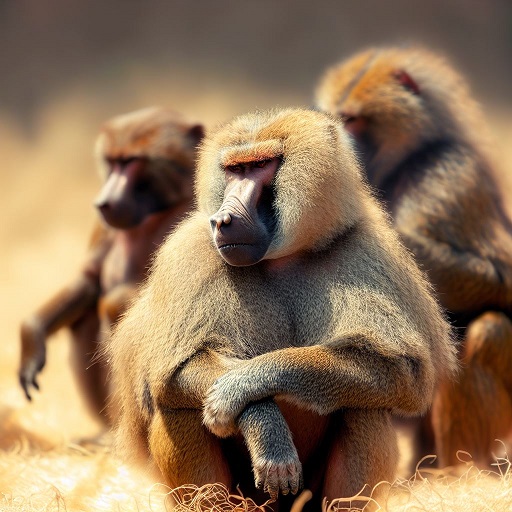
They are fascinating animals that belong to the same family as monkeys and apes. They have different features and habits depending on where they live and what they eat. Let me introduce you to the five kinds of baboons that exist in the world:
- The chacma baboon‘s is the biggest and strongest of all. It lives in the southern part of Africa and has a thick coat of hair around its neck. It likes to eat fruits, roots, insects, and sometimes even small animals.
- The olive baboon is the most common and widespread. It can be found in many countries in East and North Africa. It has a greenish-brown fur and a long nose. It eats mostly grasses, seeds, and leaves, but also hunts for rodents, birds, and reptiles.
- The yellow baboon‘s are the brightest and most cheerful of all. It lives in East Africa and has yellowish-brown fur and a dog-like face. It feeds on fruits, flowers, buds, and insects, and is very social and playful.
- The guinea baboon is the smallest and rarest of all. It lives only in West Africa, mainly in Guinea and Senegal. It has a reddish-brown to gray fur and a short tail. It eats mainly grasses, roots, tubers, and nuts, and is very shy and secretive.
- The Hamadryas baboon.s is the most unique and complex of all. It lives in the Horn of Africa and the Arabian Peninsula. It has a silver-gray fur and a pink face. It eats mostly acacia pods, leaves, and flowers, and has a very strict and hierarchical social system.
These are the five amazing species of baboons that share the same genus Papio within the Cercopithecidae family. They are all very intelligent and adaptable animals that can survive in different environments and climates.
Conclusion
In conclusion, they are amazing animals that can live in many different places and have many skills. They are very social and smart, and they can eat almost anything. They also have their own way of talking to each other. When we learn more about baboons, we can see how they are both similar and different from us.
They have some behaviors, features, and relationships that make them very special. Baboons are always surprising us with their cleverness and adaptability. They are a great example of how nature is full of wonders and mysteries that we can explore.
FAQs
Q: Where can you find baboons in the wild?
They are amazing animals that live in different parts of Africa and some areas of the Arabian Peninsula.
Q: How do baboons organize themselves in a group?
They are very social animals that form large groups called troops. These troops have a complex hierarchy, with dominant males leading and protecting the group.
Q: How long does it take for a baboon to give birth?
A baboon mother carries her baby for about six months before giving birth. The baby baboon is born with black fur and pink skin, and clings to its mother’s chest or back for the first few months of its life.
Q: How do baboons talk to each other?
They have a rich and varied communication system that involves vocalizations, body language, and facial expressions. They use different sounds to express their emotions, intentions, and needs. They also use gestures, postures, and eye contact to communicate within their troop.
Q: What do baboons like to eat?
Baboons are omnivores, which means they eat both plants and animals. They enjoy a diverse diet of fruits, seeds, roots, grasses, insects, and sometimes small mammals, reptiles, and birds. They can also raid crops and garbage bins for food.











